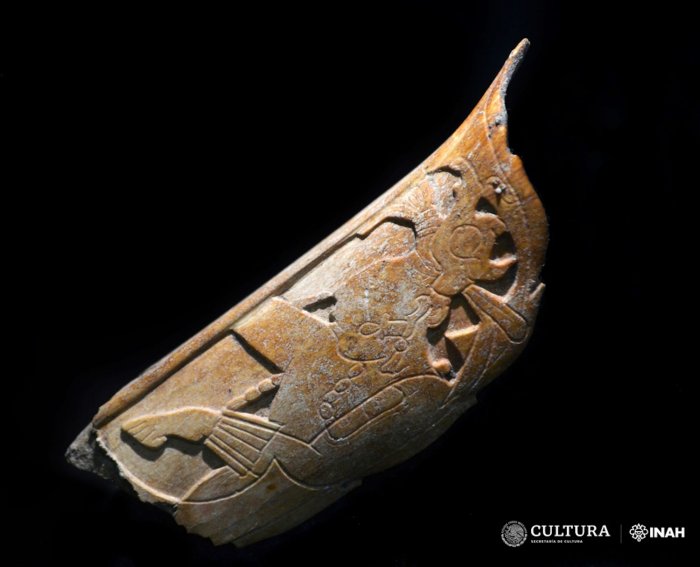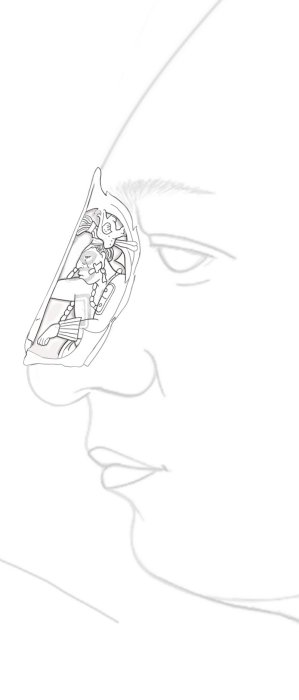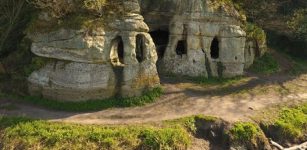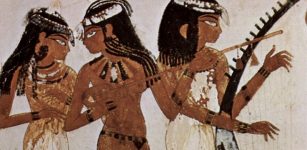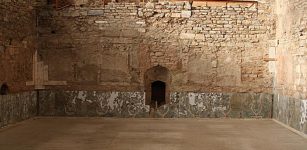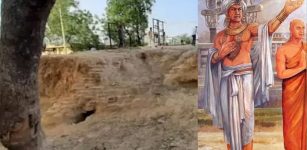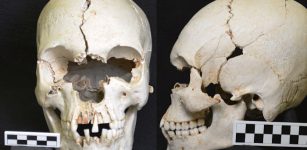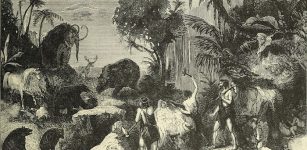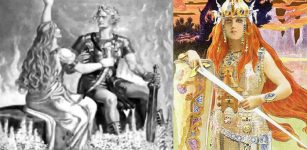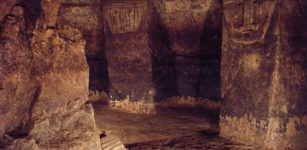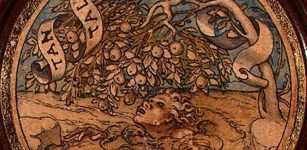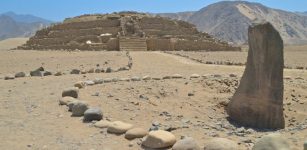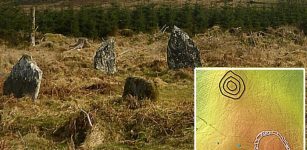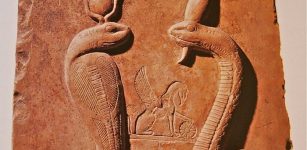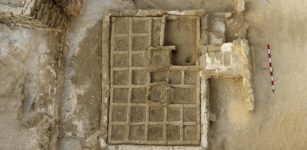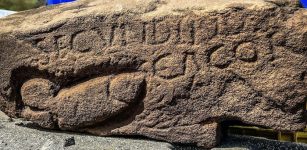Ancient Maya Nose Ornament Made Of Human Bone Discovered In Palenque
Conny Waters - AncientPages.com - Archaeologists excavating at the Archaeological Zone of Palenque in southern Mexico report they have found an ancient Maya nose ornament made of human bone. It is the first time scientists have come across an artifact like this one in the ancient city of Palenque.
Archaeological Zone of Palenque. Credit: INAH
Being no more than 6.4 cm long by 5.2 cm wide and 5 cm thick, the object was buried in a pit under a stucco floor at the palace complex in Palenque. The Maya nose ornament was carved with extraordinary detail and precision, depicting the profile of a man wearing a bird headdress, tubular wristbands, a necklace of spherical beads, and a counterweight earmuff.
The man's left arm shows the Mayan glyph ak'ab', "darkness" or "night," while the right extends and cuts at the crest to continue on the other side of the piece, where it holds a long, thin object.
From where the character takes the object, the band is decorated with vertical lines and a quad-shaped tie. In the lower part is the representation of a human skull without a lower jaw, from which knobby ends and long bones emerge. The skull is placed on what appears to be a bundle of cloth marked with crossed bands.
This intriguing caring expresses communication with the gods and ancestors and is a common scene in Mayan art of the Classic period (250-900 A.D).
Archaeologists found a Maya nose ornament made of human bone. Credit: INAH
Rulers and priests wore the curved nose ornament during ceremonies in which they embodied K'awiil, the Mayan god of lightning, serpents, fertility, maize, abundance, and royal lineage, scientists from INAH (Instituto Nacional de Antropología e Historia) explain in a press statement.
Just earlier this year, archaeologists performing rescue work on section 7 of the Maya Train route accidentally discovered a unique stone sculpture of the Mayan god K’awil. He is characterized by a zoomorphic head with large eyes, long, upturned snout, and an attenuated serpent foot. A torch, stone celt, or cigar, normally emitting smoke, emerges from his forehead, while a serpent leg represents a lightning bolt.
According to the director of the Palenque Archaeological Project (PAP), Arnoldo González Cruz, another aspect to highlight regarding the carved scene on the nose ring is the burden that the character carries. Funerary packages were common among the ancient Mayans, which are present in the iconography.
He explains that the nose ring was part of the attire of the city's elite because it appears in several sculptural representations, such as the sarcophagus of the Temple of the Inscriptions, the Oval Tablet of House E, and the Throne of Temple XXI, being carried by the ajaw Yohl Ik'nal, Sak K'uk', Pakal I and Pakal II.
"We believe that it was used to personify the deity of corn since one of the characteristic features of the divinity is the shape of the extremely elongated head and profile that ended in a point, which seems to emulate an ear, which becomes long and narrows as it grows.
Illustration of the nose ornament. Credit: INAH Carlos Varela Scherrer
Credit: INAH Carlos Varela Scherrer
The people in Palenque sought to reproduce the head of this god through intentional cranial deformation. The oblique tabular shape and the use of the nasal ornament allowed the bridge of the nose to be covered so that the profile, from the tip of the nose to the forehead, was a continuous and almost straight line,” he says.
See also: More Archaeology News
Although there is a lack of analysis to determine the manufacturing processes, the type of tools used, and even the resin that fixed the object to the bridge of the nose, the archaeologist concludes that its importance lies in the fact that “it is an example of Mayan artistic sensitivity, while its iconographic and conceptual message illuminates beliefs of the ancient inhabitants of Palenque about the funerary cult and the otherworldly existence of the human being.”
Written by Conny Waters - AncientPages.com Staff Writer


